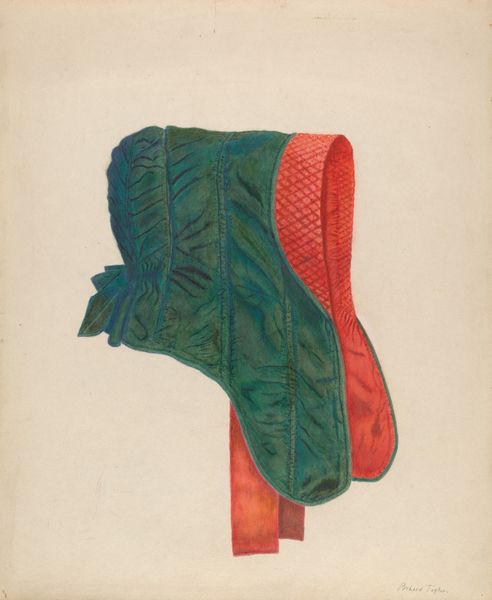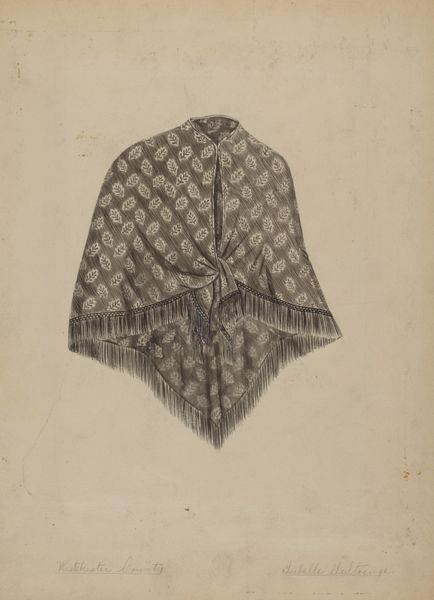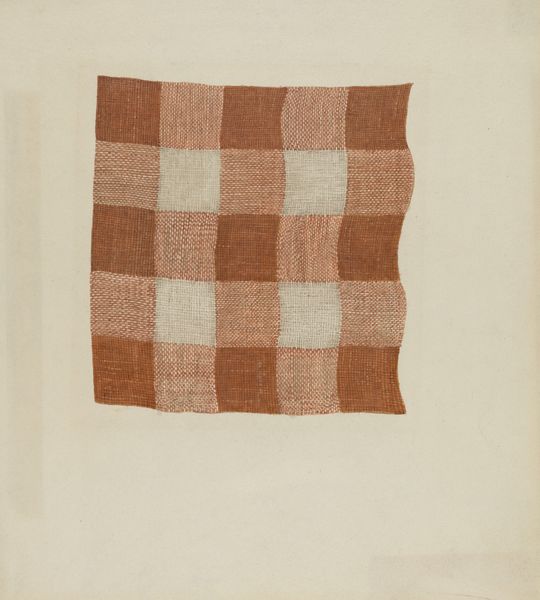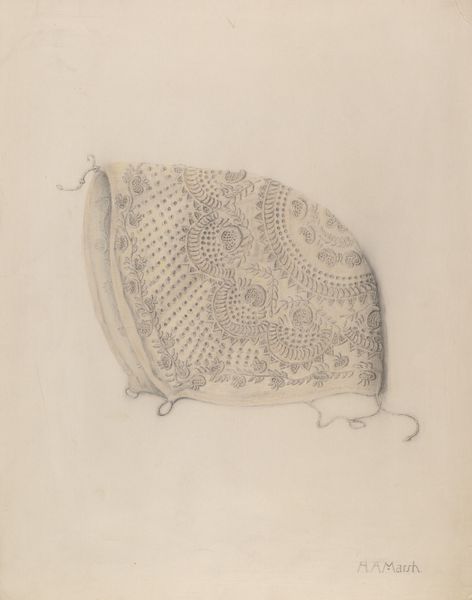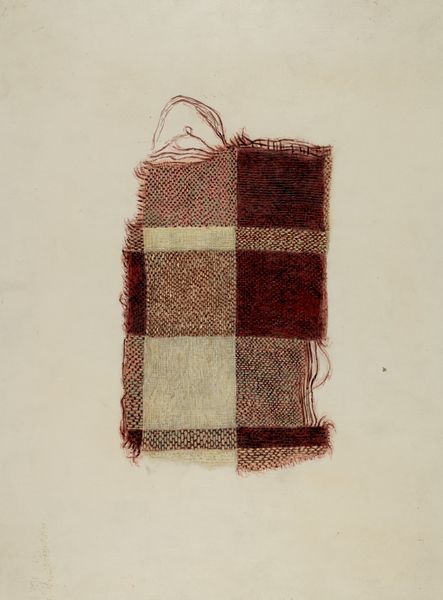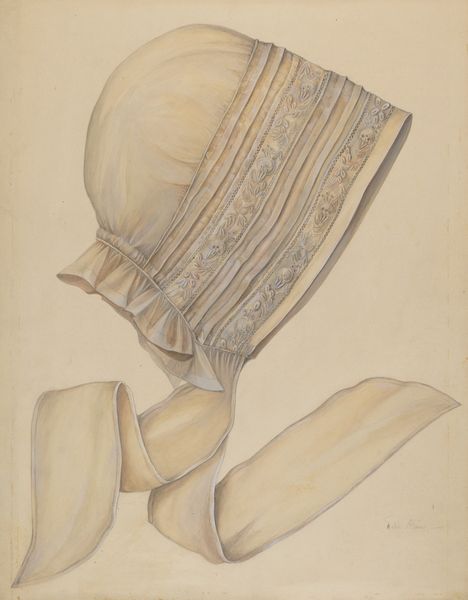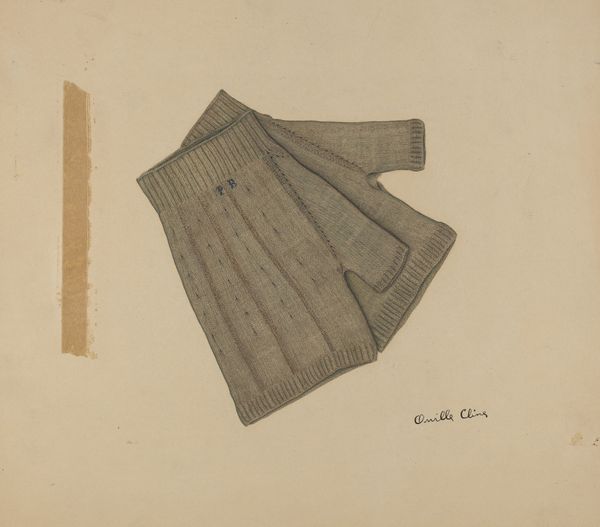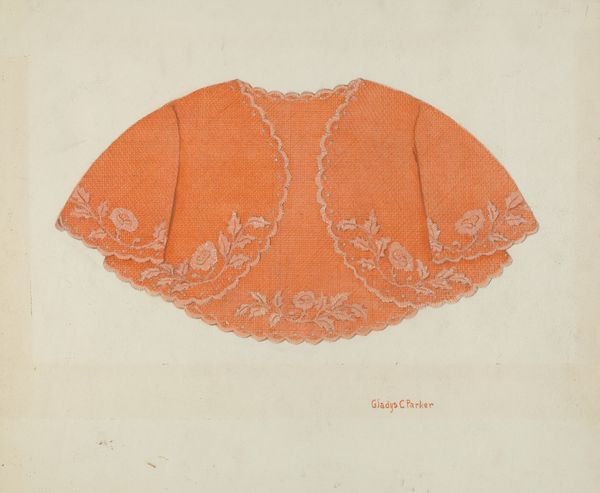
drawing, watercolor, pencil
#
drawing
#
watercolor
#
pencil drawing
#
pencil
#
watercolour illustration
#
watercolor
#
realism
Dimensions: overall: 24.4 x 35.4 cm (9 5/8 x 13 15/16 in.)
Copyright: National Gallery of Art: CC0 1.0
Curator: This simple kerchief depicted in watercolour and pencil seems so unassuming at first glance. It is rendered so softly! Editor: And so tenderly, like a shy, whispered memory. It is Helen E. Gilman’s, titled "Shaker Kerchief," and dates from around 1936. Beyond the domestic, though, it represents resilience, the dignity of everyday labor, the artistry woven into a community defined by devotion, pacifism, and self-sufficiency, so don't be fooled! Curator: Well, the quietness is what I noticed first. The subtle blending of the mauves and blues and the gentle way the light rests on the fabric; it feels meditative. It almost invites you into a world governed by simpler virtues. Editor: Exactly. This isn’t merely a representation of a garment; it encapsulates the material culture of the Shakers, those remarkable 18th-century religious refugees whose social revolution demanded equality across gender, and even race, and the creation of utopian societies that pushed against norms of ownership. What do you think the colour symbolism represents? Curator: Perhaps the soft color palette speaks to their humble lifestyle? There is also a sense of worn familiarity. The kerchief shows how beauty can be discovered in the quotidian. Is there an overt symbolism or more of an intuitive feeling, you know? The soft rendering makes me imagine the cool press of it on my skin. I love to meditate on colour. Editor: The absence of figures underscores the importance of community and the shared values they lived. Gilman may be encouraging a radical act of viewing; inviting us to see not just with our eyes but through a lens of ethical consciousness! I would call it domestic space as an activism! Curator: I see it more as celebrating stillness and solitude and allowing that object to almost become its own symbol for an entire system of beliefs. But in that moment, one just appreciates its intrinsic beauty, forgetting, even, that context. It is nice to contemplate both ways though! Editor: Yes. Gilman uses accessible aesthetics to highlight histories of marginalized groups that were, at their core, attempting radical restructuring, she reminds us of both art and radical agency. Curator: Leaving me wondering about beauty in quiet protest and those whispers that rise through us from inanimate things.
Comments
No comments
Be the first to comment and join the conversation on the ultimate creative platform.

